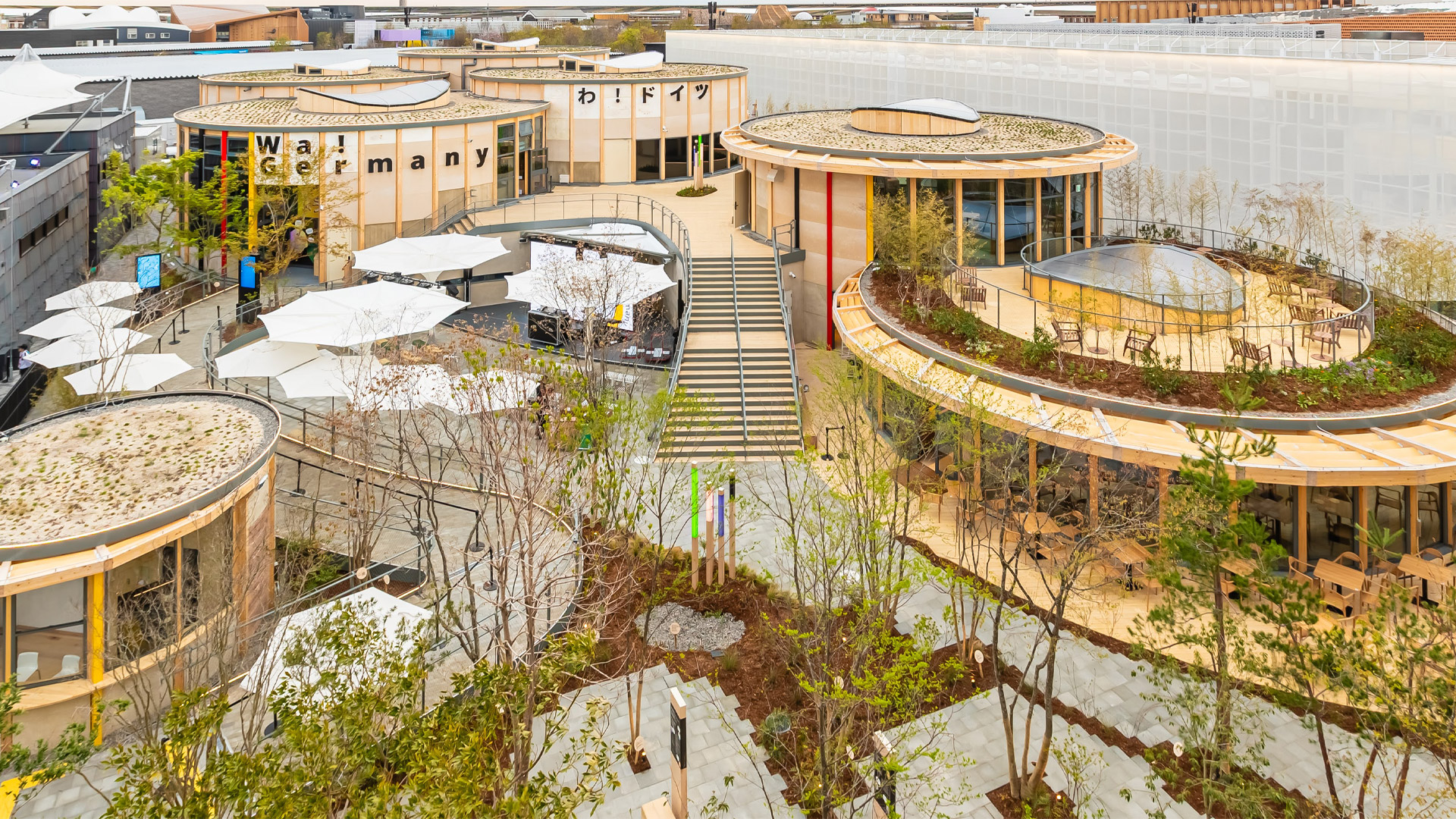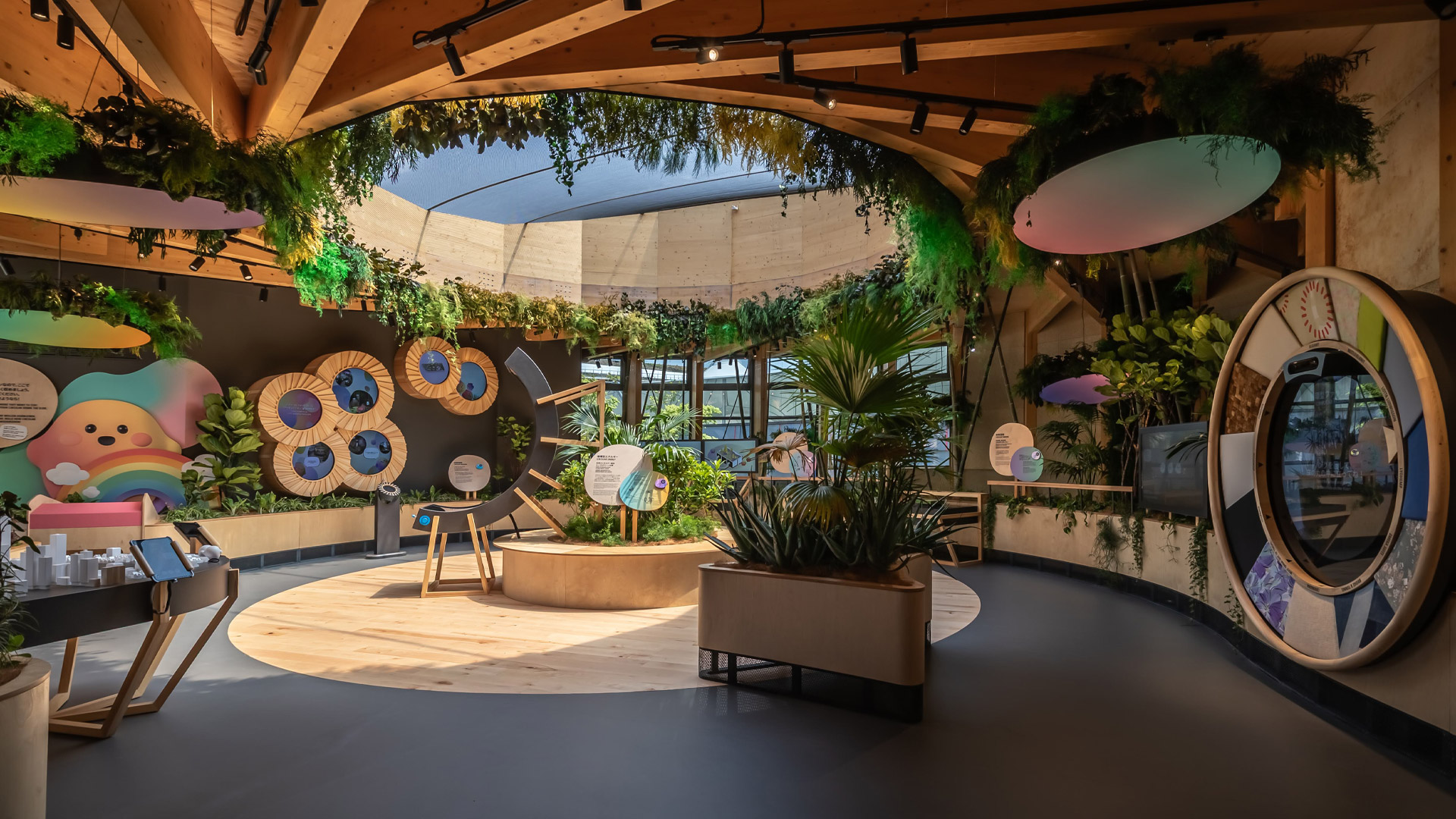The 2025 World Expo in Osaka, Japan, is a global event of historic significance – not only because of its sheer size, but above all because of its thematic focus. From April 13 to October 13, 2025, the Pacific port city will become an international showcase for technological innovation, cultural diversity, and visions for the future of society. More than 160 countries, 28 million expected visitors, and an event site on a specially created island in Osaka Bay – these are the conditions for an event that aims to do nothing less than help shape the future of our civilization.

For the global trade fair industry, technology enthusiasts, architecture lovers, and those interested in culture, Expo 2025 is already one of the most important events of the coming years.
The central motto of Expo 2025 is: “Designing Future Society for Our Lives.” It addresses pressing issues of our time and provides a framework for a global exchange of ideas. What does progress mean in the 21st century? How can technology serve people – and not the other way around? What responsibility do we have for our environment, our fellow human beings, and future generations? Exhibitors and participating nations are invited to not only present products or services, but also to provide answers to questions such as:
The motto is more than just a slogan—it is a call to participate.
The Expo site is being built on Yumeshima, an artificially reclaimed island in Osaka Bay. The choice of location is no coincidence: Osaka is considered one of the most dynamic and innovative cities in Asia, with a strong industrial tradition, cultural openness, and an international network. The Expo site covers approximately 155 hectares, which is equivalent to around 220 soccer fields. The centerpiece is the Grand Roof – a gigantic ring-shaped roof with a diameter of around 675 meters and a circumference of over 2 kilometers, designed by renowned architectural firm Sou Fujimoto. It serves not only as a landmark, but also as a connecting element between the pavilions and as a symbol of networking, circular thinking, and unity in diversity. Yumeshima's infrastructure has been specially prepared for the major event in recent years, with new bridges, subway connections, digital networks, and supply systems that will remain in place after the Expo.
The Expo is divided into three central theme clusters:
This area is dedicated to everything that protects and prolongs life: medical technologies, biotechnological innovations, pandemic preparedness, healthcare, food security, and access to clean water. The focus here is on future global health issues – from the vaccine of the future to AI-supported diagnostics.
How can people realize their potential, regardless of their origin, gender, age, or education? This area is all about inclusion, education, equality, and participation. Social innovations that enable new forms of coexistence are also presented here.
This area deals with global networking: the focus here is on the internet, mobility, urban infrastructures, smart cities, and communication technologies. From autonomous transport solutions to quantum communication, this area shows how the world is growing together digitally. All three themes flow into the overarching concept of the People's Living Lab – a kind of living test environment where the future is not only discussed, but also experienced and shaped.
Around 160 nations will be presenting their own cultural, technological, and social perspectives, often in the form of spectacular pavilions that are impressive in their architecture alone: Germany will be presenting an energy-self-sufficient pavilion on the topic of circular economy, which uses materials according to the cradle-to-cradle principle. The design focuses on flexible use of space, modular construction, and digital interactions that actively involve visitors in the topic of sustainability. More about deutschen Pavillon auf der Expo 2025. France is focusing on a fully recyclable wooden structure that combines French aesthetics with sustainable thinking. The pavilion combines art, cuisine, and environmental awareness and shows, among other things, how France is rethinking innovative agriculture and energy production. The United Arab Emirates is focusing on the greening of desert areas through vertical farming. Using state-of-the-art climate technology and digital farming methods, the pavilion conveys the ambitious goal of making hostile regions sustainable. Japan , as the host country, impresses with a pavilion that combines futuristic robotics with traditional wooden architecture. The building is a symbol of harmony between nature, technology, and culture - inside, visitors can expect a highly interactive journey through Japan's visions for the future. Italy brings Mediterranean flair to Yumeshima Island with a pavilion that combines architecture, design, and gastronomy. The focus is on the interplay between traditional craftsmanship and high-tech innovation, for example in sustainable materials and smart building technologies. China is making a statement with a pavilion that focuses on the theme of “Smart City.” Artificial intelligence, big data, and green energy play a central role, accompanied by cultural highlights such as traditional music, art, and tea ceremonies. The USA is presenting itself with a state-of-the-art pavilion under the motto “Life, Liberty, and the Pursuit of the Future.” The focus is on the innovative strength of the United States in areas such as space travel, AI, sustainability, and biotechnology. Interactive exhibits, futuristic design, and a strong focus on social participation make the visit a multimedia experience. South Korea impresses with a futuristic pavilion that blends technology, urbanity, and culture. The building itself is a technical work of art with a transformable façade that reacts to visitors' movements. The focus is on topics such as smart mobility, artificial intelligence, and digital living environments, complemented by immersive VR and AR experiences. The United Kingdom is focusing on a visionary design that combines language, AI, and creative technologies. Inspired by the last work of physicist Stephen Hawking, the pavilion aims to create a collective poem of humanity, fed by words contributed by visitors from all over the world. The focus is on education, science, diversity, and global cooperation. The pavilions are not just exhibition spaces, but experiential spaces—many feature immersive installations, interactive experiences, and culinary encounters. The diversity of the architecture reflects the international dialogue that Expo 2025 aims to facilitate.

Expo 2025 is setting new standards in hybrid experiences: for the first time, a world exhibition will be completely complemented by a parallel digital world. Visitors who are unable to travel physically will be able to experience the Expo via 3D tours, augmented reality, and live streaming platforms. The aim is to enable global participation – regardless of budget, mobility, or distance. This will also make the world exhibition an educational and cultural experience for schools, universities, and research institutions worldwide.
Expo 2025 in Osaka is consistently applying sustainable principles right from the planning and construction phase. Most of the materials used are reusable, and many of the pavilions are designed so that they can be dismantled and reused elsewhere after the exhibition. Ongoing operations also follow a clear ecological orientation – with the ambitious goal of making the Expo largely emission-free. Waste management is based on the principles of the circular economy, whereby resources are kept in the cycle of use as completely as possible. The energy supply relies on renewable sources such as solar energy, hydrogen, and geothermal energy. Visitors are also actively encouraged to use public or environmentally friendly transportation. Numerous systems on the site—such as smart grids and innovative water management solutions—are designed as pilot projects and will serve as blueprints for future urban infrastructure. The Yumeshima island will continue to be used beyond the Expo, for example as an innovation hub for research and technology or as a future event venue. In the long term, the site is set to become a driver of regional development and sustainable structural change.
In addition to the pavilions, guests can look forward to an extensive supporting program featuring:
The organizers are expecting a huge rush of visitors, especially during the summer months. If you are planning to visit the Expo, you should:
Expo 2025 in Osaka is much more than an exhibition of technological achievements or architectural highlights. It sees itself as a global platform for exchange, innovation, and shaping the future together. In a time of global challenges, it focuses on issues that affect us all – from sustainable development and social participation to technological opportunities. The world exhibition sets new standards with hybrid formats, a consistently sustainable infrastructure, and a wide range of opportunities for active participation. It shows what international cooperation can look like in practice – practical, visionary, and open to new approaches. For six months, Osaka will be the center of global attention – and will provide impetus that will continue to have an impact beyond the event: for a world that is more connected, more responsible, and more sustainable. Further information is available on the official Expo 2025 website.